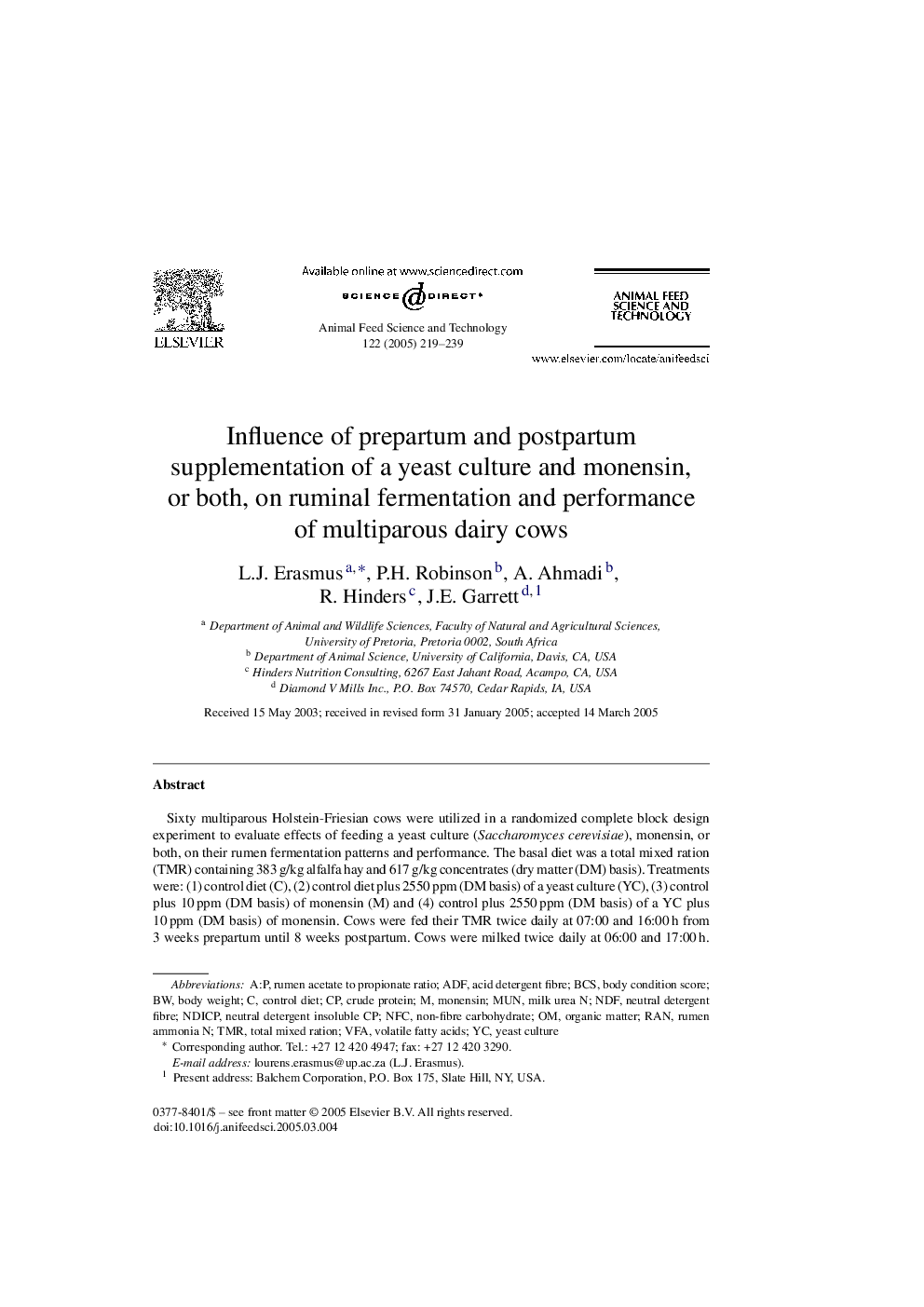| Article ID | Journal | Published Year | Pages | File Type |
|---|---|---|---|---|
| 8973659 | Animal Feed Science and Technology | 2005 | 21 Pages |
Abstract
Sixty multiparous Holstein-Friesian cows were utilized in a randomized complete block design experiment to evaluate effects of feeding a yeast culture (Saccharomyces cerevisiae), monensin, or both, on their rumen fermentation patterns and performance. The basal diet was a total mixed ration (TMR) containing 383Â g/kg alfalfa hay and 617Â g/kg concentrates (dry matter (DM) basis). Treatments were: (1) control diet (C), (2) control diet plus 2550Â ppm (DM basis) of a yeast culture (YC), (3) control plus 10Â ppm (DM basis) of monensin (M) and (4) control plus 2550Â ppm (DM basis) of a YC plus 10Â ppm (DM basis) of monensin. Cows were fed their TMR twice daily at 07:00 and 16:00Â h from 3 weeks prepartum until 8 weeks postpartum. Cows were milked twice daily at 06:00 and 17:00Â h. Compared to C, all treatments increased mean postpartum ruminal propionate concentration and decreased the ratio of acetate:propionate. Mean postpartum rumen pH and ammonia N concentrations were not affected by treatment, although pH and ammonia N progressively decreased with either YC or M as the level of pH or ammonia N in the cows increased. Mean milk yield, milk composition and body weight change of treatment groups did not differ from those of the C group, although milk crude protein (CP) yield progressively increased with YC, and decreased with M, as the level of milk CP production of the cows increased. Mean DM intake (DMI) varied between 20.8Â kg/day (M) and 22.2Â kg/day (C), with DMI progressively increased with YC, and decreased with M, as the DMI level of the cows increased. Results suggest a modest complimentary effect between YC and M, as YC tended to alleviate the depression in mean DMI caused by M. However, results can also be interpreted to suggest that YC may be a better choice than M in cows with high DMI potential, and/or inherent milk production capability, whereas M may be a better choice than YC in cows with lower DMI potential, and/or inherent milk protein production potential.
Related Topics
Life Sciences
Agricultural and Biological Sciences
Animal Science and Zoology
Authors
L.J. Erasmus, P.H. Robinson, A. Ahmadi, R. Hinders, J.E. Garrett,
